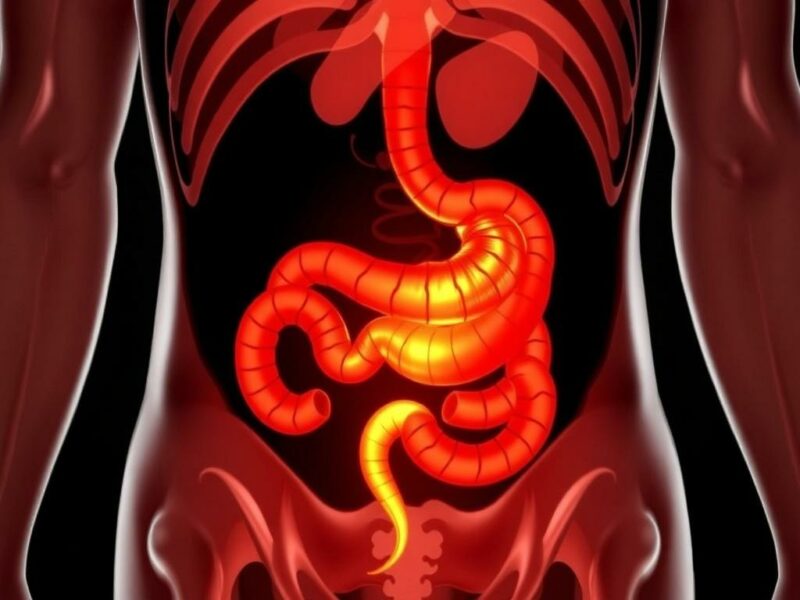Appendicitis is a common medical emergency that affects millions of people worldwide every year. If you or someone you know has experienced sudden abdominal pain, you might have heard doctors mention something called *rebound tenderness*. But what exactly is rebound tenderness? How does it relate to appendicitis, and why is it important for diagnosis and treatment? This article will explore the concept in depth, breaking down the science behind it and why it is such a vital sign in the clinical world.
When it comes to appendicitis, identifying symptoms early can make all the difference. Rebound tenderness is one of the classic signs that doctors use to detect inflammation of the appendix before more severe complications arise. This article will dive into the anatomy of the appendix, the nature of rebound tenderness, how it presents during a physical examination, and its role in guiding treatment decisions. So, whether you are a healthcare student, a patient, or just an interested reader, stay with me as we uncover the nuances of this key medical sign.
What is Rebound Tenderness?
Rebound tenderness is a clinical sign that medical professionals use to assess the presence of peritoneal irritation, which often accompanies conditions like appendicitis. To understand rebound tenderness better, we first need to grasp what is happening beneath the surface of the abdominal wall. The abdomen contains various organs, including the appendix, intestines, liver, and others. These organs are covered by a thin layer called the peritoneum, which can become inflamed during infection or injury.
Rebound tenderness occurs when a healthcare provider presses down gently on the abdominal wall and then releases the pressure suddenly. If the patient experiences a sharp, painful sensation upon letting go rather than when pressure is applied, this is called rebound tenderness. It indicates irritation of the peritoneum, which is often a sign of an inflamed appendix.
Think of it like a spring: pressing down slowly compresses the tissues, but releasing suddenly allows the tissues to snap back into place, causing pain if the underlying peritoneum is inflamed. This reflex or response gets the doctors’ attention because it suggests that something in the abdomen is seriously wrong.
The Science Behind Rebound Tenderness and Appendicitis
Appendicitis is the inflammation of the appendix, a small, tube-like structure attached to the large intestine. When the appendix becomes blocked—due to infection, fecal matter, or swelling—it can swell and become inflamed. This inflammation irritates the surrounding peritoneal lining and leads to pain.
Rebound tenderness happens because when the inflamed peritoneum is compressed slowly, the pain might not be as intense. But the sudden release causes the inflamed tissue to stretch quickly, triggering sharp pain. This response helps doctors differentiate between superficial abdominal pain and deeper, peritoneal pain.
How is Rebound Tenderness Tested?
Testing for rebound tenderness is a straightforward, yet crucial, part of a physical examination for suspected appendicitis or other abdominal problems. Here’s a simple breakdown of the steps a healthcare provider follows during the test:
- First, the patient lies down on their back, relaxing their abdominal muscles as much as possible.
- The doctor identifies the area of tenderness, typically the lower right quadrant of the abdomen, where the appendix is located.
- Gentle pressure is applied evenly to the abdomen using fingers.
- The doctor then quickly removes the hand.
- If the patient reports a sudden increase in pain as the pressure is lifted rather than when it is applied, rebound tenderness is present.
This test, often combined with other abdominal exams, helps the physician confirm the suspicion of appendicitis.
Other Signs Accompanying Rebound Tenderness in Appendicitis
While rebound tenderness is an important sign, it rarely stands alone in the diagnosis. Doctors look for other signs and symptoms that, together, help paint the full clinical picture:
| Symptom or Sign | Description |
|---|---|
| McBurney’s Point Tenderness | Localized pain at a point one-third the distance from the anterior superior iliac spine to the umbilicus. |
| Guarding | Involuntary tightening of the abdominal muscles to protect inflamed tissue. |
| Fever | Elevated body temperature as a sign of infection. |
| Nausea and Vomiting | Common symptoms accompanying abdominal pain in appendicitis. |
| Elevated White Blood Cell Count | Lab test indicator of inflammation and infection. |
By combining these signs, a doctor can make a more accurate diagnosis and decide on the best course of action.
Why Does Rebound Tenderness Matter in Appendicitis?

Appendicitis can progress quickly from a simple inflammation to a rupture, which can cause life-threatening infections. Early detection is critical to avoid complications. Rebound tenderness serves as a red flag, alerting the clinician that the inflammation has reached the peritoneum, indicating that appendicitis may be at an advanced stage.
Understanding this sign is important for a few reasons:
- Early Diagnosis: Detecting rebound tenderness helps catch appendicitis before the appendix ruptures.
- Guiding Treatment: The presence of rebound tenderness often means the need for surgical intervention as soon as possible.
- Differential Diagnosis: It helps differentiate appendicitis from other causes of abdominal pain, such as gastroenteritis or ovarian cysts.
The Role of Rebound Tenderness in Different Age Groups
Although rebound tenderness is a useful sign, its detection can vary significantly depending on the patient’s age. For example, children and elderly patients might not always exhibit classic signs of appendicitis, including rebound tenderness.
- Children: The abdominal muscles may be tense from fear or anxiety, making the exam tricky. They might not communicate pain accurately.
- Elderly: Tend to have less pronounced symptoms or delayed inflammatory response, sometimes making rebound tenderness subtle or absent.
- Pregnant Women: Because of shifting abdominal organs, the traditional location for pain and rebound tenderness may be displaced.
In these populations, doctors often need additional imaging or lab tests to confirm the diagnosis.
Limitations and Risks of Relying Solely on Rebound Tenderness
Rebound tenderness is a valuable clinical sign but it isn’t infallible. There are some inherent limitations and risks associated with placing too much emphasis on this physical sign alone.
False Negatives and Positives
Sometimes, rebound tenderness may be absent despite appendicitis. This could be due to a “retrocecal appendix,” where the appendix lies behind the cecum, making it harder to elicit peritoneal signs. Similarly, other abdominal problems, such as pelvic inflammatory disease, can cause rebound tenderness, leading to possible misdiagnosis.
Patient Discomfort
Performing the rebound tenderness test can cause significant pain and distress to the patient. Although necessary, doctors have to balance potential discomfort with diagnostic benefits carefully.
Need for Complementary Diagnostic Tools
Because rebound tenderness is subjective and depends on the examiner’s technique and patient cooperation, it’s essential to use adjunctive tests:
| Diagnostic Tool | Role in Appendicitis |
|---|---|
| Ultrasound | Helpful for visualizing the inflamed appendix especially in children and pregnant women. |
| CT Scan | Gold standard for adults; provides detailed imaging of abdominal organs. |
| Blood Tests | Check for elevated white blood cells and markers of inflammation. |
These tools, combined with a thorough physical exam including rebound tenderness, lead to better diagnostic accuracy.
Rebound Tenderness in Other Abdominal Conditions
Although rebound tenderness is strongly associated with appendicitis, it can also be present in other causes of peritoneal irritation. Here are some other conditions where you might see rebound tenderness:
- Peritonitis: Generalized inflammation of the peritoneum from infection or chemical irritation.
- Diverticulitis: Inflamed diverticula in the colon causing localized peritonitis.
- Cholecystitis: Gallbladder inflammation sometimes causes rebound tenderness in the upper right abdomen.
- Intestinal perforation: Leakage of intestinal contents into the peritoneal cavity leading to severe peritonitis.
- Ectopic Pregnancy: Ruptured pregnancy outside the uterus can cause rebound tenderness in the pelvis.
Therefore, doctors consider the entire clinical context rather than a single sign when making critical decisions.
Signs and Symptoms Commonly Associated With Rebound Tenderness in These Conditions
| Condition | Other Symptoms |
|---|---|
| Peritonitis | Severe abdominal pain, rigid abdomen, fever, nausea |
| Diverticulitis | Lower left abdominal pain, fever, constipation or diarrhea |
| Cholecystitis | Right upper quadrant pain, nausea, jaundice sometimes |
| Intestinal perforation | Sudden severe pain, shock, fever |
| Ectopic Pregnancy | Pelvic pain, bleeding, dizziness, shoulder pain |
How Patients Can Prepare and What to Expect During the Examination

If you suspect appendicitis and visit the doctor, understanding rebound tenderness helps you know what to expect from the physical examination. Here are some tips to prepare:
- Wear comfortable clothes that allow easy access to your abdomen.
- Notify the doctor if you have any abdominal injuries or surgeries.
- Try to relax your abdominal muscles as much as possible during the exam.
- Be honest about your pain level and any other symptoms you experience.
The doctor will perform the examination carefully but may need to press and release your abdomen multiple times. Although it might hurt, this helps them make an accurate diagnosis, guiding potentially life-saving treatment.
Summary Table: Key Facts About Rebound Tenderness in Appendicitis
| Aspect | Details |
|---|---|
| Definition | Pain upon sudden release of abdominal pressure indicating peritoneal irritation |
| Significance | Suggests inflamed peritoneum often due to appendicitis or other serious abdominal conditions |
| Test Location | Typically over the lower right abdomen (McBurney’s point) |
| Associated Symptoms | Fever, nausea, localized tenderness, guarding |
| Limitations | May be absent or misleading in certain populations or conditions |
| Complementary Diagnostics | Ultrasound, CT scan, blood tests |
Conclusion
Rebound tenderness is more than just a medical term—it is a crucial clue in the puzzle of diagnosing appendicitis and other abdominal emergencies. This simple, physical sign provides doctors with insight into whether the peritoneum, the sensitive membrane lining the abdomen, is inflamed. While rebound tenderness is a powerful diagnostic tool, it works best when combined with other signs, symptoms, and diagnostic tests. Understanding rebound tenderness not only enriches our knowledge about appendicitis but also highlights the importance of careful physical examination in medicine. Whether you are a patient, caregiver, or healthcare enthusiast, appreciating these subtle nuances can empower you to recognize and respond to abdominal pain effectively. Prompt recognition and treatment of appendicitis can save lives, and rebound tenderness remains a valuable indicator guiding this urgent medical response.



